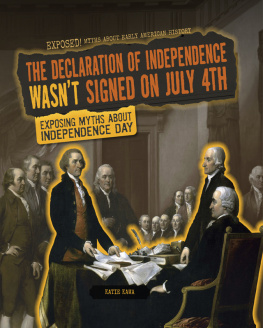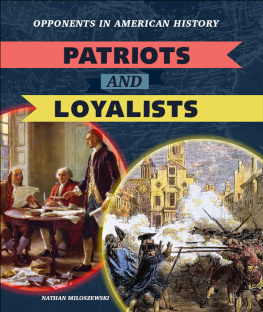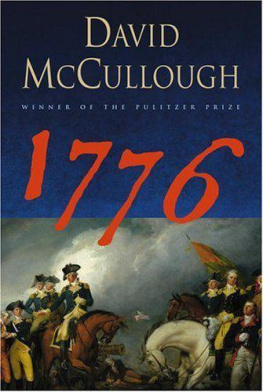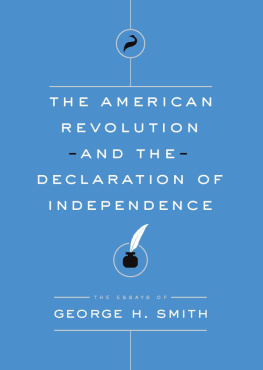
THE
DECLARATION
OF
INDEPENDENCE
By
Peter & Connie Roop
For John C. Peterson: an advocate for equal rights for all.
-Peter and Connie
Text Copyright @2012 by Peter and Connie Roop
Electronic ISBNS: 978-0-9885631-2-4; 978-0-9885631-3-1
All rights reserved. No part of this book may be reproduced in any manner or transmitted in any form or by any means, electronic or mechanical, including photocopying, recording, or by informational storage and retrieval systems, without permission from the authors.
Peterroop@aol.com
Other E-Books by Peter and Connie Roop
Sacagawea: Girl of the Shining Mountains
Lets Celebrate St. Patricks Day
Other Books by Peter and Connie Roop
Tales of Famous Animals
Tales of Famous Heroes
Tales of Famous Americans
Down East in the Ocean
The Buffalo Jump
Eye for an Eye: A Story of the Revolutionary War
Good-Bye for Today: The Diary of a Young Girl at Sea
Keep the Lights Burning, Abbie
Buttons for General Washington
If You Lived With the Cherokee
Pilgrim Voices: Our First Year in the New World
I, Columbus: My Journal 1492-149
Off the Map: The Journals of Lewis and Clark
In Their Own Words: Betsy Ross
In Their Own Words: Ben Franklin
In Their Own Words: Sojourner Truth
In Their Own Words: Christopher Columbus
In Their Own Words: Sitting Bull
Going to Yellowstone
River Roads West: Americas First Highways
Lets Celebrate Christmas
Lets Celebrate Halloween
Lets Celebrate Valentines Day
Lets Celebrate Thanksgiving
Lets Celebrate Earth Day
Lets Celebrate Presidents Day
Whales and Dolphins
Penguins Are Cool!
Baby Whales Long Swim
Baby Dolphins First Day
Table of Contents
Abigail Adams: Abigail lived in Massachusetts, but her heart was with her dearest friend husband John Adams when he was away working for independence. Independent herself, Abigail cared for her family and farm in Johns repeated absences. Abigail frequently wrote John long letters about her thoughts, giving him love, support, and advice. Her inspiring words encouraged John to keep fighting for independence when it seemed an impossible dream.
John Adams: A Massachusetts lawyer and farmer, John was the guiding light behind independence. Adams was extremely well read and used his knowledge of law, history, government, and people to lead the colonies along the road to independence. He became the second president of the United States.
Sam Adams: Sam, Johns friend and cousin, lived in Boston. While John was the brains behind independence, Sam was the determined mastermind, working toward the goal of independence long before other Americans even considered such a revolutionary action.
Benjamin Franklin: Dr. Franklin, inventor and kite flyer, was the most famous American in the world in 1776. A retired Philadelphia printer, Franklin devoted his energies and skills into improving the world. Before independence Franklin lived in London, working to keep the American colonies in the British Empire. When this failed, Franklin returned home, dedicating his wisdom and wit to the cause of independence.
General Thomas Gage: General Gage was the commander of the British army in America. Gage loved America and found it difficult to put down the American rebellion. His troops, however, opened fire on American Patriots on April 19, 1775 in Lexington and Concord, Massachusetts beginning the War of Independence.
King George III: George became king of Great Britain in 1760. During the early years of his reign, the American colonists honored King George III. By 1776, however, stubborn King George had become more of a tyrant than a beloved monarch. Much of the Declaration of Independence was a listing of grievances against his rule.
John Hancock: Hancock, a Massachusetts merchant and smuggler, was one of Americas wealthiest men. In 1776 John Hancock was President of Congress when independence was declared. Hancock was the first person to sign the Declaration of Independence. Hancock signed with such a flourish that today we ask people to sign their John Hancock as their signature.
Patrick Henry: Henry was a fiery Virginia lawyer and leading spokesman for independence. His famous Give Me Liberty or Give Me Death speech planted the seeds of independence in the hearts of many Americans.
Thomas Jefferson: In 1776 red-haired Thomas Jefferson was only thirty-three years old when he wrote the Declaration of Independence. Soft spoken Jefferson was a masterful writer whose appealing words and phrases explained to the world why the thirteen American colonies had declared their independence.
Thomas Paine: Poverty-stricken Paine had been in America less than a year when he penned his inspiring book Common Sense. Paines powerful words convinced even more Americans to rebel against Britain.
Parliament: Parliament governed the British Empire. The laws Parliament passed taxing her colonies became the motivating force behind American independence.
Paul Revere: Paul Revere was a talented Boston silversmith, a skilled horseman, and a dedicated Patriot. Revere organized dozens of men and women to spy on the British. Revere is famous for his midnight ride of April 18, 1775, but he was only one of the many messengers spreading the word that the British were coming.
George Washington: Washington was a wealthy Virginia planter and slave owner. Washington courageously fought for the British during the French and Indian War and earned a reputation for leadership. In 1775 Congress appointed Washington commander in chief of the American militia. Washington molded this ragtag group of independent Patriots into the army which defeated the British, the worlds most powerful army.
Thursday, July 4, 1776 was hot enough to melt candles. Inside the Pennsylvania State House it was even hotter. The delegates of the Second Continental Congress were debating their final changes to the Declaration of Independence.
July 4, 1776 would become a milestone in American history.
Tempers flared as ideas were discussed and statements were added or subtracted from the Declaration. New York lawyers wanted one thing put in. Georgias planters wanted one thing taken out. Pennsylvania landowners wanted something different than the Massachusetts merchants.
This final debate on July 4 actually began on July 2 when Congress officially voted to declare independence. This closing debate centered on what Richard Henry Lee of Virginia had proposed on June 7, 1776: Resolved, That these United Colonies are, and of right ought to be, free and independent States, that they are absolved [freed] from all allegiance to the British Crown.
On July 3, John Adams of Massachusetts, a leader for independence, proudly wrote his wife Abigail. Yesterday, the greatest question was decided which ever was debated in America. He predicted that the second day of July, 1776, will be the most memorable epocha (time) in the history of America.
Adams expected July 2nd to be celebrated with pomp and parade, with shows, games, sports, guns, bells, bonfires, and illuminations (fireworks) from one end of this continent to the other, from this time forward, forevermore.











